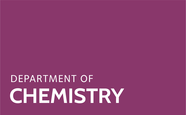Organometallic motifs are well-established constituents of many synthetic receptors, wherein they fulfill a variety of functions that are often difficult to impart with purely organic structures. Not only can they serve as guest binding sites but also as unique structural scaffolds, enabling, for example, the facile construction of sophisticated receptors via coordination-driven self-assembly. In addition, many organometallic receptors are inherently redox or photoactive, thereby providing a facile means of sensing a receptor-bound guest species. Herein, we provide an overview of advances in the development of organometallic receptors for ions and neutral molecules since 2007.




